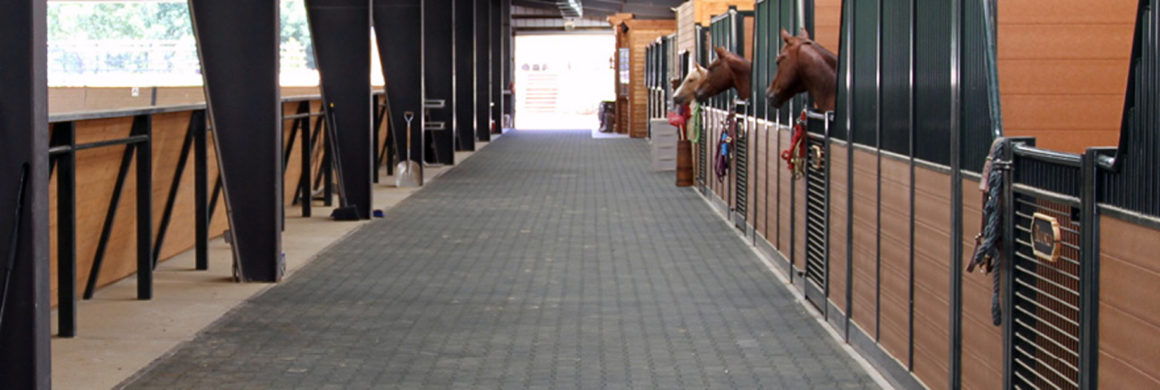When we think about designing our dream stable, our minds often go first to the stalls. With good reason — our horses spend a decent percentage of time in their stalls, so we want them to be roomy, safe, and comfortable. Then we think about our tack room, our wash-racks, our amenities — all the extras that make the stable comfortable for us, the humans in the equation. But we might actually spend the most time of all in our stable aisle, getting from place to place, grooming horses, or just plain hanging out and having a chat with friends. It’s also a place for first impressions: when clients walk into your stable, the aisle is the very first part of the interior they’ll see.
The way you surface your stable aisle will have serious implications for the way you use your stable for years to come. It affects the way you clean, the way you work, the way you lounge, and the way people see your business for the first time. What kind of surface will work best for you? Here are three possible options to consider for your stable aisle.
Concrete is one of the most simple go-to flooring for stables. If your greatest concern is an easy-to-clean alternative to a dirt aisle, concrete is an economical choice. However, one of concrete’s greatest drawbacks is right in its name: it’s hard as, well, concrete. That doesn’t just mean it’s painful to slip and fall on (and concrete is slippery when wet), it’s also hard on hooves, feet, and legs which might be walking or idling on it during the course of a day.
Rubber mats can work on top of most flooring systems, existing or new. While texturizing concrete can cut down on the slipping hazard, rubber mats can mitigate both the dangers of slipping and the long-term comfort issue posed by concrete’s unforgiving surface. While this adds to the overall price, it’s an investment in health and safety. Custom-cut rubber mats, and ones that interlock, can create a uniform look for your stable which can be easily hosed off each day, although for a more thorough scrubbing, the mats can be cumbersome to lift and put back into place after cleaning. An example of these can be seen in our IOS Ranch project, https://equinefacilitydesign.com/project-item/ios-ranch.
Rubber pavers, like those shown on our Three Sons Ranch (https://equinefacilitydesign.com/project-item/three-sons-ranch) project, continue to grow in popularity as they offer the stability and durability of concrete without the health and safety concerns. Pavers come in a variety of shapes and sizes, from simple interlocking bricks which can be laid down over a concrete or screened dirt surface, to larger paving systems designed to work in tandem with drainage systems. Rubber pavers are often made of recycled materials and are available in a variety of colors, giving you the opportunity to do something nice for your horses, the earth, and in your farm’s colors.
On our Equestrian Links page, https://equinefacilitydesign.com/equestrian-links, you’ll find some of our partner companies, several of which provide more detailed information on flooring, such as rubber mats and rubber pavers.


